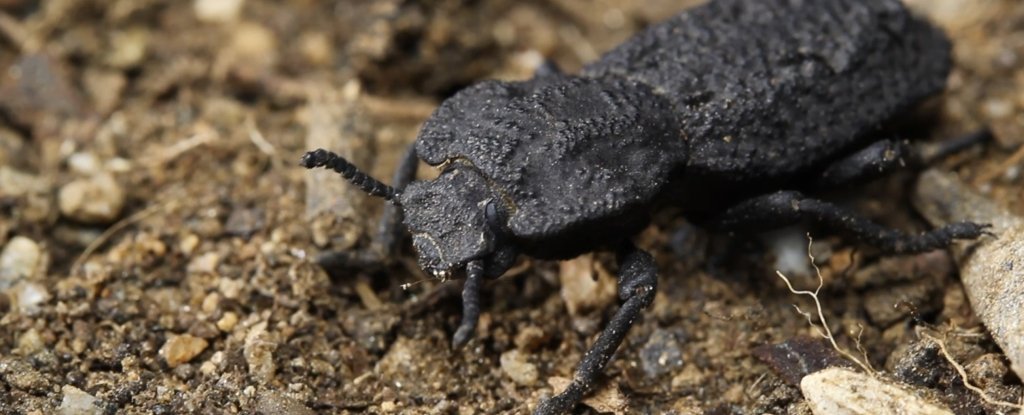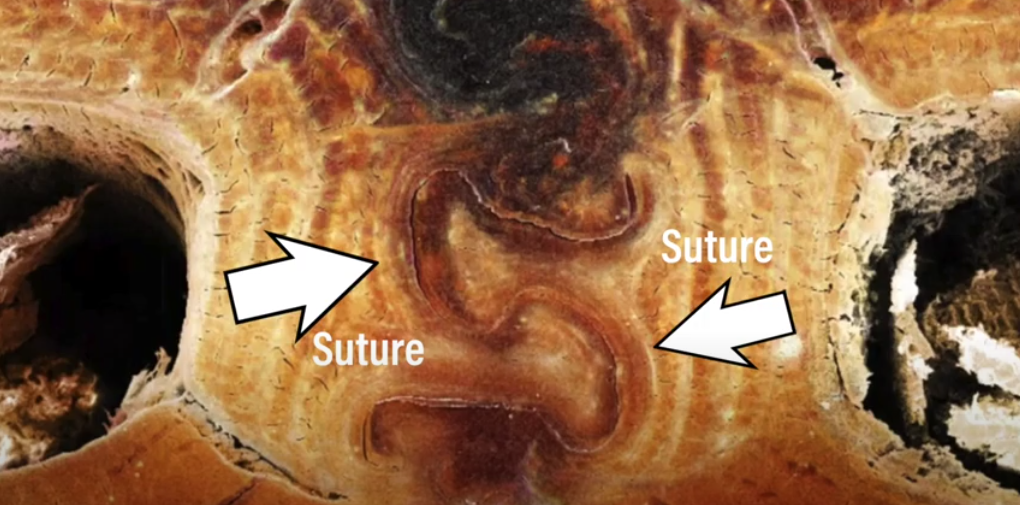
Posted on 10/21/2020 8:43:04 AM PDT by Red Badger

The diabolical ironclad beetle (Phloeodes diabolicus) of North America doesn't have the visual pizzazz of some of its more shiny beetle cousins, looking more like a small piece of gnarly bark or stone.
But what it lacks in dazzle, it makes up for in durability: its exoskeleton is one of the toughest materials in the natural world. Now scientists might have finally figured out its secrets - and are starting to apply them to new materials.
Not only is it incredibly difficult for predators to attack, the diabolical ironclad beetle has been known to survive not just human stompings, but being run over by cars. So tough is its exoskeleton, entomologists have found it challenging to mount the beetle for display using steel pins.
Even though it can't fly, the bug's survival skills are through the roof. And scientists have just used a suite of tools to discover the physical and mechanical properties that give the diabolical ironclad beetle its incredible fortitude.
"The ironclad is a terrestrial beetle, so it's not lightweight and fast but built more like a little tank," said materials scientist David Kisailus of the University of California Irvine.
"That's its adaptation: It can't fly away, so it just stays put and lets its specially designed armour take the abuse until the predator gives up."
The little beetle measures just over a centimetre in length, and spends its time crawling around the southwest deserts of North America, lurking under rocks, or under the bark of trees. The team collected their beetles from the Inland Empire region of California.
First, they conducted steel plate compression tests of the entire exoskeleton to ascertain just how much force the beetle could withstand, comparing the results to other beetle species from the same region with similar predators, such as pecking birds, and the same defence strategy, playing dead.
The similar beetles were able to withstand an average peak load of less than 68 Newtons. The diabolical ironclad beetle, by contrast, could withstand a maximum force of 149 Newtons - that's a jaw-dropping 39,000 times its own body weight.
Just imagine the weight of having 39,000 clones piled on top of you. Yikes.
Anyway, the next step was trying to figure out how the little beetle does what it does, for which the team employed spectroscopy, scanning electron microscopy and CT scans to closely study the hard shell.
They also conducted simulations and used 3D printed models to verify their findings.
The architecture and material composition of the entire exoskeleton accounts for some of the toughness; but the key, the researchers found, lay in the elytra.
In flying beetles, the elytra are the hard forewings that act as wing cases to protect the more delicate veined hindwings that the insect uses for flight.
Because the diabolical ironclad beetle doesn't fly, its elytra have hardened even further and become locked together along a suture line to act more like armor.

(Purdue Engineering/YouTube)
This exoskeleton, the team found, is composed of chitin, a fibrous material derived from glucose, and a protein matrix. When they compared the diabolical ironclad beetle's exoskeleton to that of a similar beetle, they found that the ironclad had significantly more protein - about 10 percent more by weight.
But the suture line along which the beetle's elytra are fused ended up playing a crucial role in its toughness.
"The suture kind of acts like a jigsaw puzzle," said materials scientist Pablo Zavattieri of Purdue University. "It connects various exoskeletal blades - puzzle pieces - in the abdomen under the elytra."
When the team looked closer to observe how these interlocking structures performed under pressure, they found something interesting.
Rather than snap apart, as you'd expect puzzle pieces to do, the microstructures within the exoskeletal blades gave way to layered parallel fracturing, a process known as delamination.
This is aided by a coating of microscopic hairs called microtrichia on the outside surfaces of the blades that increase friction, preventing the interlocking edges from slipping apart. This combination of features allows the elytra to deform more gently, which dissipates energy more evenly and prevents the exoskeleton from snapping and killing the insect.
"When you break a puzzle piece, you expect it to separate at the neck, the thinnest part," Kisailus said. "But we don't see that sort of catastrophic split with this species of beetle. Instead, it delaminates, providing for a more graceful failure of the structure."
This discovery could pave the way for the development of more durable materials to overcome engineering challenges. This could lead, for example, to safer aircraft engines, which employ fasteners that add structural stress that decrease the durability of the overall engine.
The researchers built an aircraft engine fastener using carbon fibre material and mimicking the jigsaw-puzzle structure of the diabolical ironclad beetle's suture.
After conducting loading tests, they found that their fastener was just as strong as the fasteners currently in use, but significantly tougher.
"An active engineering challenge is joining together different materials without limiting their ability to support loads," said mechanical engineer David Restrepo of the University of Texas at San Antonio.
"The diabolical ironclad beetle has strategies to circumvent these limitations."
The research has been published in Nature.
VIDEO AT LINK.........................
Very interesting indeed!
...is composed of chitin...
Let the jokes begin!

Hmmm. body armor made from spider silk and this armor????
I’ve always wondered how pistachio-nut shells can be so incredibly strong and stiff for their weight.
Or car bodies....................It’s not so much the materials as the way they are put together. Imagine a dent-less car body..................
Very interesting indeed!
How does it help against predators that would swallow it whole?
There are several papers on-line on the subject of the strength of pistachio-nut shells. This one: Physical and Chemical Structural Analysis of Pistachio Shells (a pdf) contains pictures that look a little like the beetle shell photomicrograph.
Obviously I'm not the only person who wondered about the strength of pistachio nut shells.
Knight Rider comes to mind.
These things are big............
You win post of the day!
Experimentation on random exoskeleton strength at Casa RB is performed with a bug zapper fly swatter. Flies and moths are quickly toasted and Jap hornets simply dance before flying away.
A centimetre is not very big, less than half an inch.
Isn't that what college kids did back in the 60s...
The 60s? Whaddaya askin' me for?? ;^)
very cool!! crazy how strong their shell is.
but what the heck makes it diabolical...
its a plant eater with a hard shell...
Distributing load beyond the first three engaged threads is what Helicoils have been doing for a long time.
Durability is about removing point loads and distributing them on the macro and micro scale.
Interesting article.
The other durable bug that just about can’t be crushed is the red velvet ant, Dasymutilla Occidentalis. An amazing critter.
Disclaimer: Opinions posted on Free Republic are those of the individual posters and do not necessarily represent the opinion of Free Republic or its management. All materials posted herein are protected by copyright law and the exemption for fair use of copyrighted works.